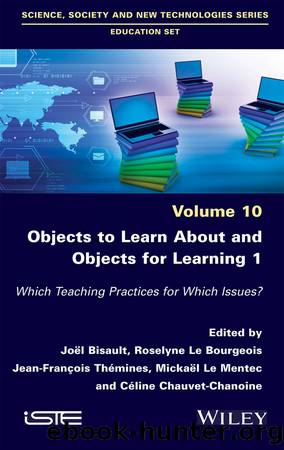Objects to Learn About and Objects for Learning 1 by Unknown

Author:Unknown
Language: eng
Format: epub
ISBN: 9781119902164
Published: 2021-03-21T00:00:00+00:00
Chapter written by Zehra GABILLON and Rodica AILINCAI.
1 We have a plurilingual perspective on language teaching and we no longer use the term âforeign languageâ teaching. Instead, we prefer to use the term âadditional languageâ (AL) to include autochthonous, foreign, regional, community or heritage languages that are taught in school. See Narcy-Combes et al. (2019), who propose terms that correspond to the current conceptualization of languages in a plurilingual world.
2 In French âEnseignement dâune matière par lâintégration dâune langue étrangèreâ (EMILE). In some texts, it is also called âEnseignement dâune Matière intégré à une Langue Ãtrangèreâ.
3 We use the term âEnglish as an Additional Languageâ (EAL) rather than âEnglish as a Foreign Languageâ (EFL).
4 We use the term âinitial languageâ instead of âmother tongueâ because in todayâs plurilingual contexts children may learn a language other than their mother tongue as their first language of socialization.
5 Some of the learners were bilingual (French and Tahitian).
6 This text is increasingly used as a reference by non-European countries such as Australia, New Zealand and Canada.
7 The theory of experiential learning originated with the works of John Dewey, as well as other theorists such as Kurt Lewin, Jean Piaget, Carl Rogers and William James (see Kolb 1984). Experiential learning is based on the view that learning is a process by which knowledge is created through the transformation of experience.
8 The beginner level corresponds to level A1, the first level of the six reference levels described in the Common European Framework of Reference (CEFR) for languages.
9 Natural learning involves the use of everyday tasks, which learners are used to doing, and objects, which learners are used to using, in their living space (at home) and their learning space (at school).
10 Microgenetic analysis is a method that is primarily used to examine how language development takes place during interactive exchanges in a social setting by obtaining detailed data on influences and changes at the time these changes occur (Ellis 2015).
11 In our research, the categories were the result of an iterative analysis.
12 It should be noted that in our experiments, our aim was to maximize the AL without proscribing the IL. The use of an AL, which is also a mediation tool, has also been investigated in our other CLIL studies.
Download
This site does not store any files on its server. We only index and link to content provided by other sites. Please contact the content providers to delete copyright contents if any and email us, we'll remove relevant links or contents immediately.
| General Broadcasting | History & Criticism |
| Reference |
Childhood's End by Arthur C. Clarke(1784)
The Fellowship of the Ring (The Lord of the Ring, #1) by J.R.R. Tolkien(1575)
Childhood's end by Arthur C. Clarke(1398)
Tolkien, J. R. R. - The Fellowship of the Ring by Tolkien J. R. R(1191)
The Stars Are Fire by Anita Shreve(1172)
Ballet For Dummies by Scott Speck & Evelyn Cisneros(1165)
Howard Stern Comes Again (9781501194313) by Stern Howard(1108)
Black Privilege by Charlamagne Tha God(1088)
The Lord of the Rings: The Fellowship of the Ring, the Two Towers, the Return of the King by J. R. R. Tolkien(1086)
The Return of the King by J.R.R. Tolkien(1055)
Dark Fire by C.J. Sansom(1011)
The Lord Of The Rings Part 03: The Return Of The King by J.R.R. Tolkien(1000)
Agatha Christie - 1945 - Sparkling Cyanide by Agatha Christie(991)
Frenchman's Creek by Daphne Du Maurier(953)
Narnia 02 - The Lion, the Witch and the Wardrobe by C. S. Lewis(927)
Lord of the Rings 0.5 - The Silmarillion by J. R. R. Tolkien(906)
The Fellowship Of The Ring by J.R.R. Tolkien(900)
The Collected Raymond Chandler by Raymond Chandler(890)
The Hitchhiker's Guide to the Galaxy Original Radio Scripts by Douglas Adams(885)
